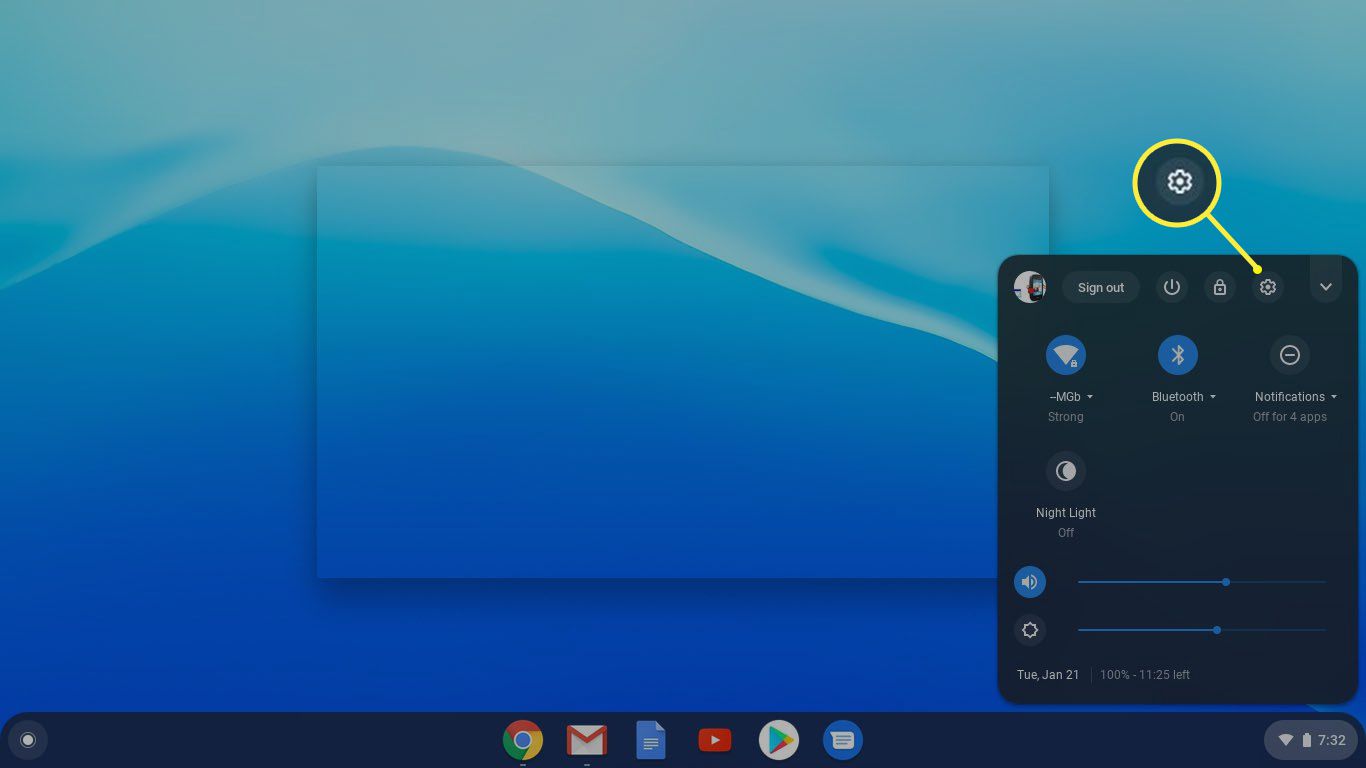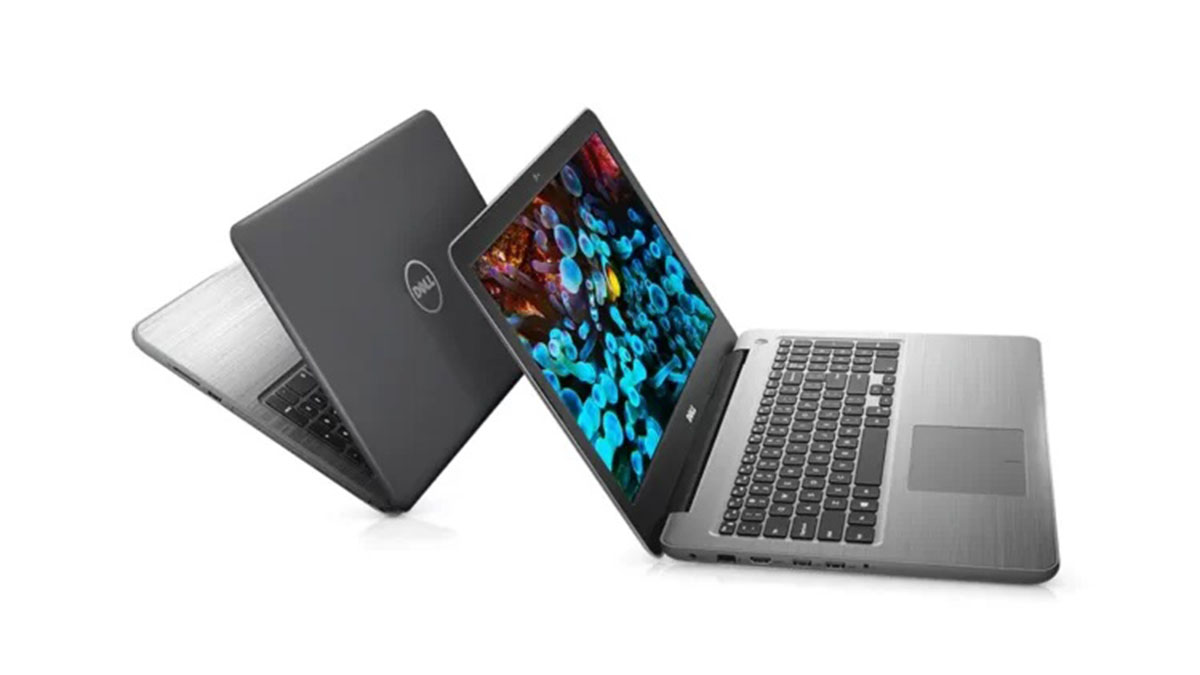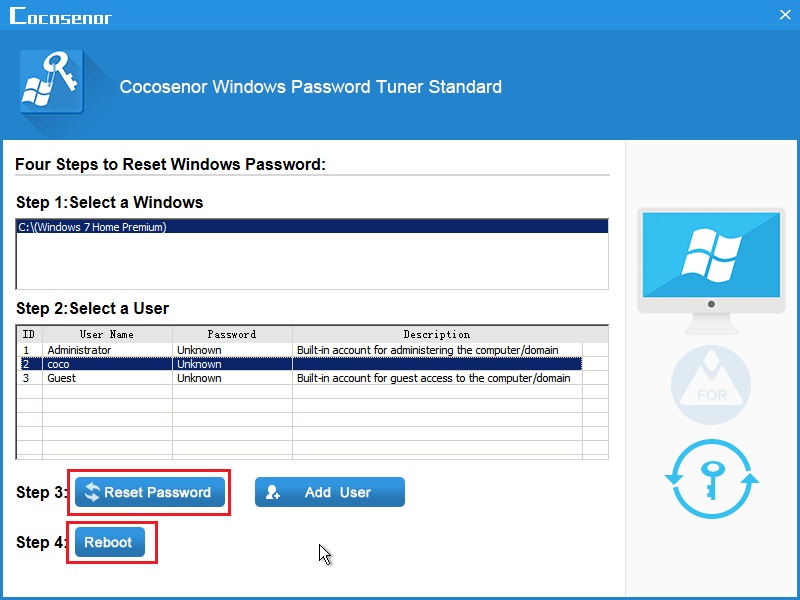Introduction
Is your Dell laptop suddenly frozen, leaving you unable to continue your work or browse the internet? Don’t panic, as this common issue can be resolved with a few simple steps. In this guide, we will walk you through the process of unfreezing your Dell laptop, ensuring that you can regain full control and functionality.
A frozen laptop can be a frustrating experience, but there’s no need to worry. Often, this issue occurs due to temporary glitches in the system or software conflicts. By following the troubleshooting steps outlined in this article, you can quickly unfreeze your Dell laptop and get back to using it without any disruptions.
Before you proceed, it’s important to note that the specific steps may vary slightly depending on the model and operating system of your Dell laptop. However, the general concepts and troubleshooting techniques remain the same.
Whether you’re using a Dell Inspiron, XPS, or any other model, this guide will provide you with a comprehensive solution to unfreeze your laptop and ensure smooth and uninterrupted performance.
Let’s dive into the step-by-step process of unfreezing your Dell laptop and troubleshooting any software or hardware issues that may be causing the freezing problem. By following these steps in order, you can quickly identify the underlying cause and fix it effectively.
Step 1: Check for Power
Before diving into troubleshooting, it’s crucial to confirm that your Dell laptop has enough power to function properly. In some cases, a frozen laptop may simply be the result of a drained battery or a loose power connection. Follow these steps to check for power-related issues:
- Ensure that the power adapter is securely plugged into both the laptop and the power outlet. Sometimes, a loose connection can prevent the laptop from receiving adequate power.
- Look for any signs of damage on the power adapter or the cable. If you notice any frayed wires or bent pins, it may be necessary to replace the power adapter.
- If you’re using a removable battery model, remove the battery from the laptop and then reinsert it. This helps to reset the connection and ensures that the battery is properly seated.
- Connect your laptop to a different power outlet or try using a different power adapter to rule out any issues with the power source.
- Press the power button and check if any lights or indicators on the laptop turn on. If there are no signs of power, it’s possible that your laptop’s battery is completely drained, and you may need to charge it for a while before proceeding.
- Leave your Dell laptop plugged in and charging for at least 15-30 minutes, even if no lights or indicators appear. Sometimes, a completely drained battery takes a while to regain enough power to boot up.
By thoroughly checking the power source and ensuring a proper connection, you can eliminate any power-related issues as the cause of your frozen laptop. If the laptop still fails to respond or remains frozen after completing these steps, proceed to the next troubleshooting step.
Step 2: Force Restart
If your Dell laptop is frozen and unresponsive, one of the simplest yet effective solutions is to force restart the device. This action helps to close any unresponsive programs or processes and allows the laptop to start fresh. Here’s how you can force restart your Dell laptop:
- Locate the power button on your laptop. It is typically located either on the side or the top of the keyboard.
- Press and hold down the power button for at least 10-15 seconds. This action forces the laptop to shut down completely.
- Release the power button and wait for a few seconds.
- Press the power button again to turn on the laptop.
After performing a force restart, your Dell laptop should start up normally. In most cases, this action helps resolve any temporary software or system glitches that may be causing the freezing issue.
It’s important to note that a force restart is different from a regular restart. A regular restart closes all running programs and processes gracefully, while a force restart forcefully shuts down the laptop without giving programs a chance to close properly.
Keep in mind that forcing a restart should be the first step you take when your laptop freezes. If the freezing issue persists after a force restart, proceed to the next troubleshooting step.
Step 3: Disconnect External Devices
External devices connected to your Dell laptop can sometimes cause freezing issues. Incompatible or malfunctioning peripherals may interfere with the system’s normal operation and lead to a frozen screen. To troubleshoot this possibility, follow these steps to disconnect external devices:
- Start by unplugging any USB devices, such as external hard drives, printers, scanners, or USB hubs, from your laptop.
- If you have a docking station or a port replicator connected to your laptop, disconnect it as well.
- Remove any SD cards, memory sticks, or other types of memory cards from the card reader slots, if applicable.
- Once all external devices are disconnected, try using your Dell laptop without them for a while to see if the freezing issue persists.
By disconnecting external devices, you can determine if any of them were causing conflicts or overloading your system, leading to the frozen screen. If the laptop functions normally without the external devices, it’s likely that one of the peripherals was the culprit.
If your laptop continues to freeze even after disconnecting all external devices, move on to the next troubleshooting step.
Step 4: Unplug and Remove Battery (for removable battery models only)
If you own a Dell laptop with a removable battery, this step is specifically for you. Sometimes, a frozen laptop can be effectively resolved by unplugging the power cord and removing the battery. Removing the battery helps to reset the system and clear any temporary glitches that may be causing the freezing issue. Here’s how you can perform this step:
- Ensure that your laptop is powered off.
- Unplug the power cord from the laptop.
- Flip your laptop over and locate the battery release latch or switch.
- Slide or flip the latch/switch to the unlocked position.
- Gently remove the battery from its compartment.
- Wait for approximately 30 seconds to 1 minute.
- Reinsert the battery back into its compartment.
- Secure the latch/switch to lock the battery in place.
- Reconnect the power cord to your laptop.
After performing these steps, turn on your Dell laptop and check if the freezing issue persists.
Removing and reinserting the battery helps to reset the laptop’s hardware and can often resolve temporary software or system glitches that cause freezing problems. However, if you have a non-removable battery model, you can skip this step and proceed to the next troubleshooting step.
Step 5: Troubleshoot with Safe Mode
If your Dell laptop continues to freeze even after performing the previous steps, it’s time to troubleshoot the issue using Safe Mode. Safe Mode is a diagnostic mode that loads the operating system with minimal drivers and services, allowing you to identify and resolve any software conflicts that may be causing the freezing problem. Follow these steps to boot your Dell laptop into Safe Mode:
- Start or restart your laptop.
- As soon as you see the Dell logo on the screen, repeatedly press the F8 key.
- You will be presented with the Advanced Boot Options menu.
- Use the arrow keys to navigate and select “Safe Mode”.
- Press Enter to boot your laptop into Safe Mode.
Once you’re in Safe Mode, observe if the freezing issue persists. If your laptop functions normally in Safe Mode without freezing, it indicates that there may be a software conflict or a problematic driver causing the issue.
In Safe Mode, you can perform various troubleshooting steps to address the problem, such as uninstalling recently installed software, updating drivers, or running a virus scan. Once you have identified and resolved the issue, restart your laptop normally to see if the freezing problem is resolved.
If your Dell laptop freezes even in Safe Mode or you are unable to troubleshoot and resolve the issue, proceed to the next step.
Step 6: Update Drivers and Software
Outdated or incompatible drivers and software can often lead to freezing issues on Dell laptops. To ensure smooth operation and prevent freezing problems, it’s crucial to keep your drivers and software up to date. Follow these steps to update your drivers and software:
- Go to the official Dell website and navigate to the “Support” or “Drivers and Downloads” section.
- Enter your laptop’s model number or use the auto-detect feature to identify your device.
- Locate the drivers and software section and download the latest versions of the drivers that pertain to your laptop’s hardware components, such as the graphics card, chipset, network adapter, and audio driver.
- Save the downloaded driver files to a location on your laptop.
- Double-click on each downloaded driver file and follow the on-screen instructions to install them.
- Once all updated drivers are installed, restart your laptop to apply the changes.
- In addition to updating drivers, it’s also important to keep your software up to date. Check for available updates for your operating system, antivirus program, and any other installed software.
- Install any pending software updates and restart your laptop if prompted.
Updating drivers and software ensures that your Dell laptop remains compatible with the latest system requirements and resolves any known issues that could cause freezing. After updating, monitor your laptop for any freezing problems. If the issue persists, proceed to the next troubleshooting step.
Step 7: Scan for Viruses and Malware
Viruses and malware can wreak havoc on your Dell laptop’s performance, including causing freezing issues. It’s essential to regularly scan your laptop for any malicious programs that may have infected your system. Follow these steps to scan for viruses and malware:
- Ensure that your laptop is connected to the internet.
- Open your installed antivirus software program.
- Update your antivirus software to ensure you have the latest virus definitions.
- Initiate a full system scan to thoroughly scan all files and directories on your laptop.
- Allow the antivirus software to scan your system fully, which may take some time depending on the size of your hard drive and the number of files.
- If any viruses or malware are detected, follow the instructions provided by the antivirus software to quarantine or remove them.
- After completing the virus scan, restart your laptop to finalize any actions taken by the antivirus software.
A comprehensive virus and malware scan can help identify and eliminate any harmful programs that may be causing your Dell laptop to freeze. Keeping your antivirus software updated and performing regular scans is crucial to maintaining the security and performance of your laptop.
If the freezing problem persists even after scanning for viruses and malware, proceed to the next step to explore additional troubleshooting options.
Step 8: Perform a System Restore
If your Dell laptop continues to experience freezing issues, performing a system restore can be a helpful solution. System restore allows you to revert your laptop’s settings and configurations back to a previous state, potentially resolving any software-related problems that may be causing the freezing. Here’s how to perform a system restore:
- Click on the “Start” menu and search for “System Restore” in the search bar.
- Select “Create a restore point” from the search results.
- In the System Properties window, click on the “System Protection” tab.
- Click on the “System Restore” button.
- Follow the on-screen instructions to choose a restore point. It’s recommended to select a restore point that was created before the freezing issue started.
- Confirm your restore point selection and start the restoration process.
- Allow the system restore to complete, which may take some time.
- Once the process is finished, your Dell laptop will restart with the restored settings.
Performing a system restore can revert any changes that might have caused the freezing problem, including recent software installations or system configurations. However, keep in mind that any files or programs installed after the selected restore point will be removed.
After completing the system restore, observe your laptop’s performance to see if the freezing issue persists. If the problem continues, proceed to the next troubleshooting step.
Step 9: Check for Hardware Issues
If you’ve reached this step and your Dell laptop is still freezing, it’s important to consider the possibility of hardware issues. Faulty hardware components can contribute to freezing problems, and identifying them is crucial for effective troubleshooting. Follow these steps to check for hardware issues:
- Start by checking the laptop’s RAM (Random Access Memory) modules. Open the laptop’s memory compartment and ensure that the RAM sticks are properly seated. If necessary, remove and reinsert them to establish a secure connection.
- Inspect the laptop’s hard drive for any signs of damage or failure. Listen for any irregular noises coming from the hard drive, such as clicking or grinding sounds. If you suspect hard drive issues, consider contacting a professional for further assessment.
- Monitor the laptop’s temperature. Overheating can cause freezing problems. Use monitoring software to check the CPU and GPU temperatures and ensure they are within safe limits. Clean out any dust or debris from the laptop’s cooling system to improve airflow.
- Perform a diagnostic test on your laptop’s internal components. Dell provides diagnostic tools that can help identify potential hardware issues. Access the Dell Support website and download the appropriate diagnostic tool for your model. Follow the instructions to perform a thorough hardware test.
- Check for any loose connections or damaged cables. Inspect the power adapter, display cable, and other peripherals connected to the laptop for any issues. Ensure that all connections are secure.
By carefully following these steps, you can identify any hardware issues that may be causing your Dell laptop to freeze. If you encounter any problems or suspect hardware failures, it’s recommended to contact Dell Support or consult a professional technician for further assistance.
Step 10: Contact Dell Support if Problem Persists
If you have completed all the previous troubleshooting steps and your Dell laptop is still experiencing freezing issues, it may be time to seek assistance from Dell Support. Their team of experienced technicians can provide further guidance and help resolve any persistent problems. Here’s how you can reach out to Dell Support:
- Visit the Dell Support website or contact their customer service hotline.
- Provide the necessary information, such as your laptop’s model number, warranty status, and a detailed description of the freezing issue.
- Follow the instructions given by the Dell Support representative. They may ask you to perform additional diagnostic tests or provide specific steps to address the problem.
- Consider providing any relevant documentation or photos to help illustrate the issue.
- Be prepared to provide proof of purchase or warranty information if necessary.
- Work collaboratively with the Dell Support team to troubleshoot and resolve the freezing issue.
Remember, Dell Support specializes in resolving technical issues and can provide you with expert advice tailored to your specific laptop model. They may recommend repairs, replacements, or offer further suggestions to rectify the problem.
By contacting Dell Support, you can ensure that your Dell laptop receives the necessary attention and solutions to overcome the freezing issue. They are there to assist you and provide the support needed to get your laptop back to optimal functioning.
Conclusion
Dealing with a frozen Dell laptop can be frustrating, but with the troubleshooting steps outlined in this guide, you can effectively resolve the issue. By systematically checking for power problems, force restarting, disconnecting external devices, and removing the battery (if applicable), you can eliminate common causes of freezing. Troubleshooting in Safe Mode, updating drivers and software, scanning for viruses, and performing a system restore can address software-related issues that may be causing the problem.
If the freezing issue persists after going through these steps, it’s essential to consider the possibility of hardware issues. Checking the RAM, hard drive, temperature, and performing diagnostic tests can help identify any underlying hardware problems. Finally, if all else fails, contacting Dell Support is recommended. Their professional technicians can provide further guidance and assistance in resolving the freezing issue.
Remember, each Dell laptop model may have unique characteristics, so it’s important to refer to the specific user manual or consult Dell’s online resources for detailed information and model-specific troubleshooting instructions.
By following these steps and seeking the necessary support, you can unfreeze your Dell laptop and ensure smooth and uninterrupted performance.

























